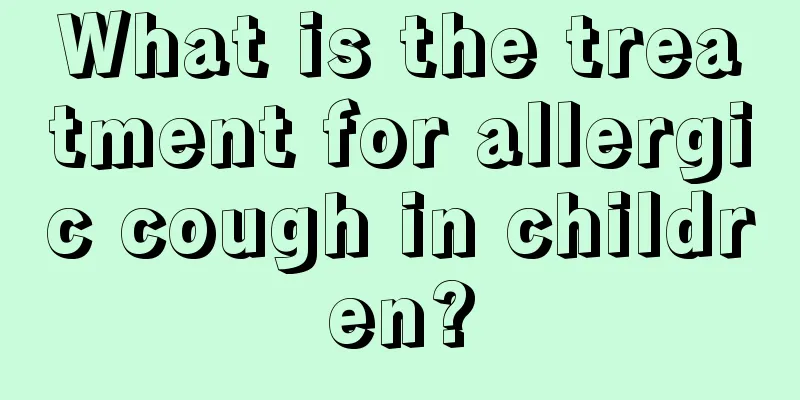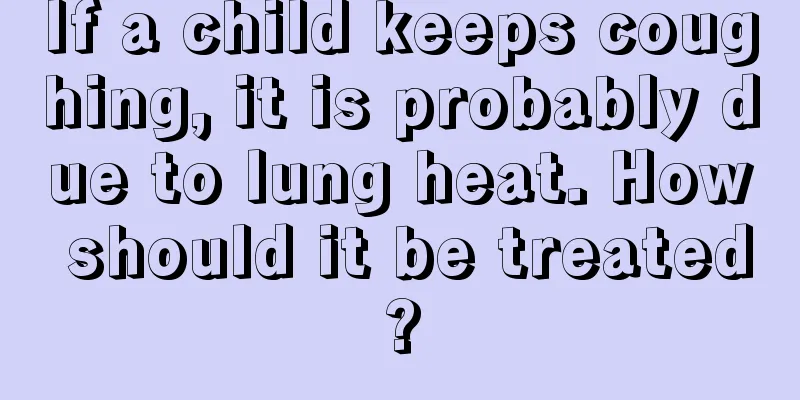What is the cause of baby's white blood cell infection?

|
As children grow up, their bodies are in the development stage and their resistance is relatively low. Bacterial infection during this period is a common physical disease. When the body is infected with bacteria, it can easily lead to high white blood cell counts in children and other complications, which require timely treatment. What happens if a child has a bacterial infection of white blood cells? Bacterial infection can generally cause an increase in white blood cell count, which is a normal reaction of the body; if a bacterial infection is confirmed and the white blood cell count decreases, it may be a sign of a serious illness. Usually once the infection is controlled, the white blood cell count will return to normal quickly. What should I do if my baby has a bacterial infection and fever? When your baby has a fever, the first thing you should do is pay close attention to changes in your baby's body temperature. Babies are small, and many of them are not willing to cooperate with their mothers in taking their body temperature, so many mothers use ear thermometers. In fact, mercury thermometers are more accurate in measuring body temperature. As a mother, I have compared the ear thermometer and the mercury thermometer and found that the difference can sometimes reach 3 degrees. This is terrible because if the baby's temperature is over 38.5, medication must be used. Therefore, these 3 degrees become crucial. Therefore, it is recommended that mothers use a mercury thermometer. Many elderly people would cover themselves up more when they have a fever and sweat it out. In fact, this trick is a big taboo for babies. When a baby has a fever, the most important thing is to quickly dissipate the heat from the baby's body to prevent the body temperature from rising further. Therefore, be sure to let your baby wear less clothes. Physical cooling. If the baby's temperature does not exceed 38.5, physical cooling will be enough. We can use warm water to wipe the baby's whole body or bathe it, and put a cool towel on the forehead. Please note that whether you are bathing the baby or applying a compress to the forehead, the water temperature should not exceed 37 degrees. Fever-reducing patches can also be used. However, it is not recommended to use substances containing alcohol to cool down the baby. Since the child is young, anything that may cause allergies should be avoided. Many mothers recommend Chinese medicine massage of acupoints, but I don’t really believe in it. It’s not as effective as physical cooling. Medication to reduce fever. If the baby's temperature exceeds 38.5, it is best to use drugs to reduce the temperature. Some mothers advocate holding off, but a friend who is a doctor once said that children are prone to convulsions when they have a fever, and the probability of this is 10 times that of adults. So it is not recommended for mothers to force it. The most commonly used antipyretic drugs are Motrin or Tylenol. Moms can keep a bottle at home. Here we would like to remind mothers that if the antipyretic medicine has been opened, it is recommended to discard it if it exceeds 1 month. Then there are antibiotics. As a mother, I am also reluctant to give my baby antibiotics, but in some cases antibiotics are necessary, such as bacterial infections. Be sure to follow your doctor's orders when taking antibiotics. Don’t think that letting your child eat less is good for him or her; the amount of antibiotics must be sufficient. After that, it is recommended to stop using antibiotics even if the child still has some symptoms. Because the medicine is enough, all that is left is for the body to digest and absorb it. All that’s left is to let the baby drink more water. In addition to boiled water, you can also give the baby some fruit juice or rice soup. In short, as long as the baby can drink it, try to supplement as much water as possible. You can also coax your baby to eat some fruit. During this period, the baby's diet should be as light as possible. You can drink more liquid foods such as millet porridge, white rice porridge and noodle soup, and try to make them as thin as possible. |
<<: What is post-treatment care for bacterial pneumonia in children?
>>: Tips for parents to educate their children
Recommend
Newborn baby tears and eye mucus
If a newborn baby sheds tears, you must pay atten...
Emergency treatment for burns in children
Because most children are rather naughty and have...
What are the symptoms of a child choking on his trachea while eating?
If a child chokes on food while eating, parents n...
Why do babies need to learn to swim?
Children are the hope of the future of the mother...
Dosage and administration of pneumonia vaccine for children
Nowadays, the incidence of many diseases is very ...
Causes and treatments of ringworm on children's face
There are several stages in life, and we will enc...
What medicine is effective for children's mouth ulcers?
Children are prone to picky eating, which can eas...
Newborns should be careful of side effects when taking Yinzhihuang oral solution
Newborns will inevitably have some gastrointestin...
Baby Nutrition Porridge Recipe Introduction
Many parents are confused about what kind of food...
How to deal with children's convulsions
As we all know, children will be threatened by ma...
Is it good to give children an enema?
In fact, if the child can take medicine normally ...
What to do if children have white spots on their fingers
Vitiligo is a highly hereditary disease with very...
How much weight does a newborn baby gain in one month?
We all know that the birth of a baby always bring...
Premature babies cannot lift their heads at three months old
If a premature baby still cannot lift his head af...
What should I do if my child has a high fever?
Parents are naturally worried when their children...









